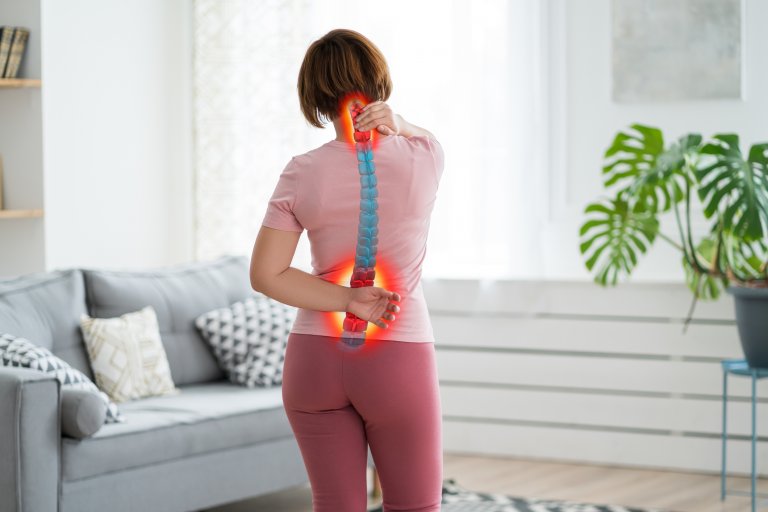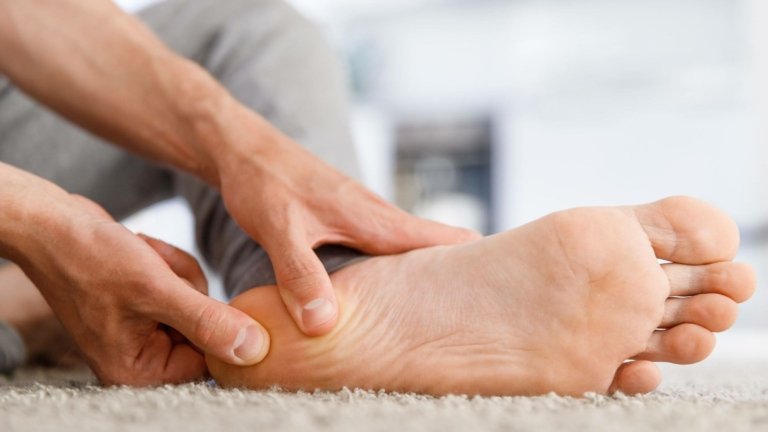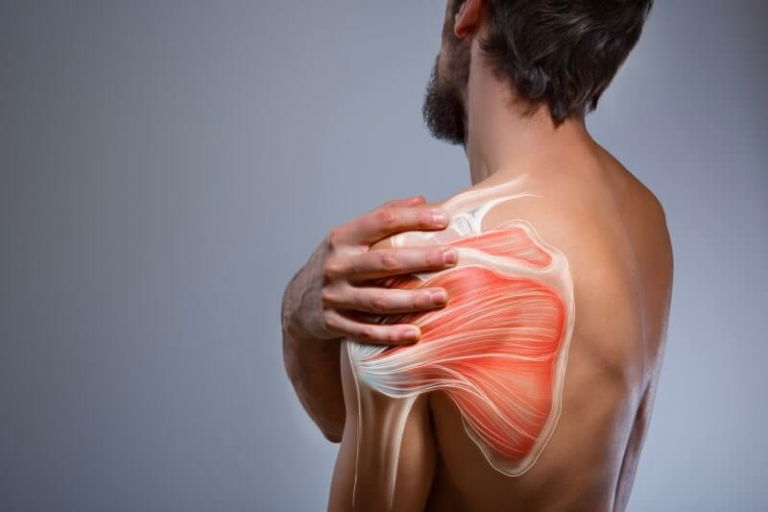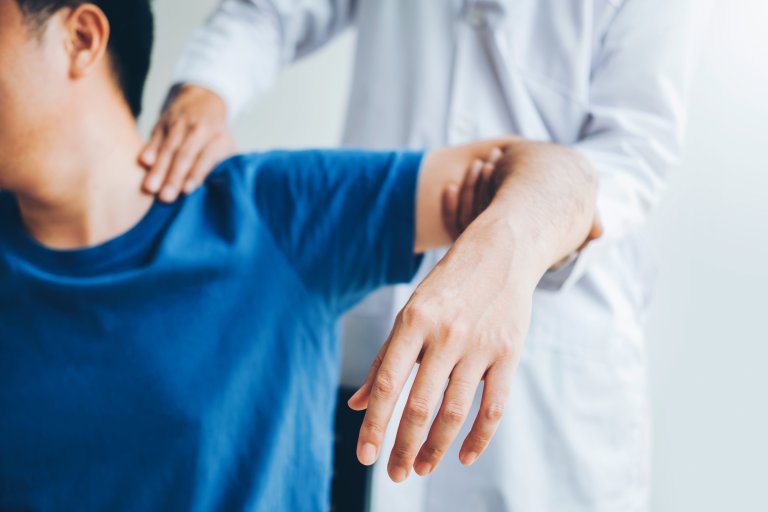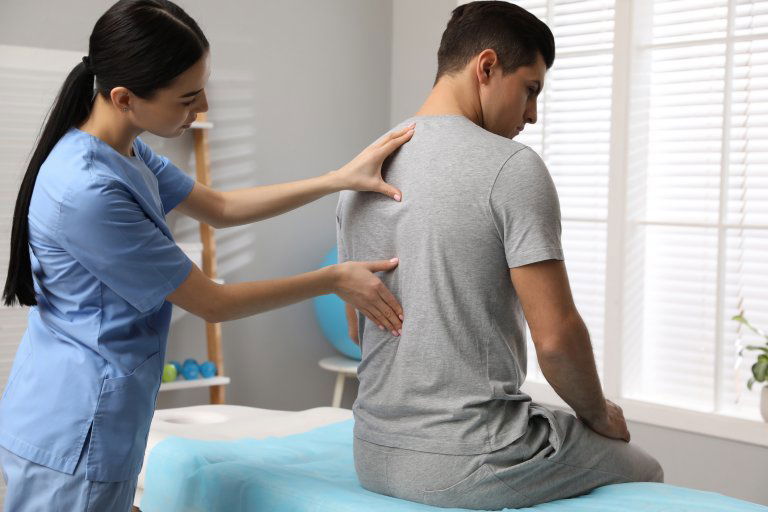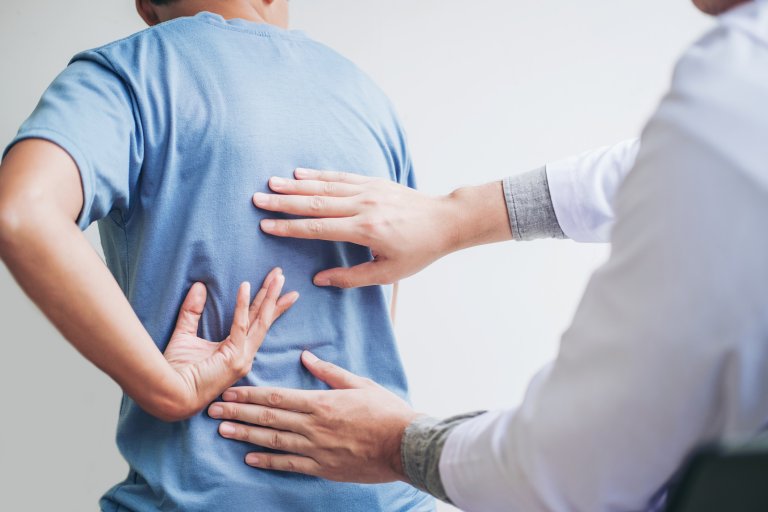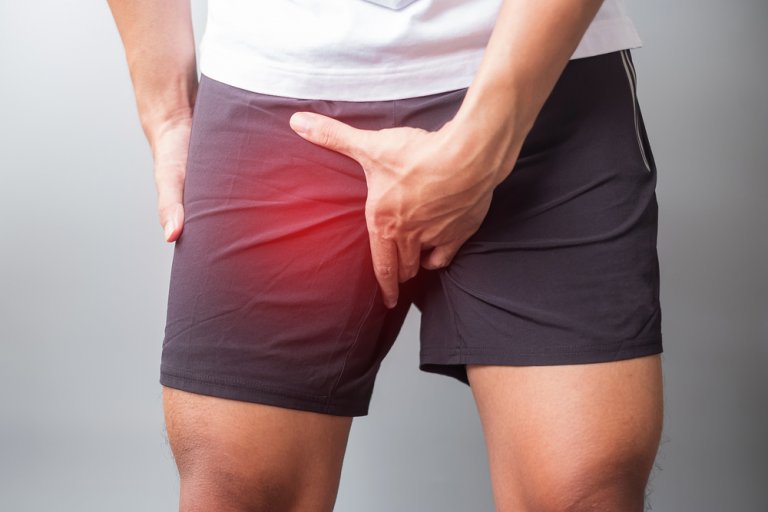Chronic lower back pain is pain that persists for more than 3 months. It is a very common condition and accounts for a huge proportion of all those who see their family doctor for musculoskeletal problems. Unfortunately, the incidence is expected to continue to rise. Lower back pain is also a major cause of disability worldwide, placing a huge burden on the individual, health systems and society.
For the vast majority of those with chronic lower back pain, the specific origin cannot be pinpointed and the pain is therefore categorised as “non-specific”. This can be a thankless term from the patient’s point of view, as it quickly connotes “irrelevance”. At the same time, lower back pain is so common among people that it is sometimes taken as normal. But of course this is not the case.
Chronic lower back pain is serious and can often be very severe. The term “non-specific” means only that the diagnostic procedures cannot pinpoint the tissue origin of the pain; it is therefore not due to muscle or ligament damage, nor is it due to various pathologies affecting the spine and its vertebrae. It certainly requires a serious approach. And the first choice of treatment for chronic low back pain, according to international guidelines, is physiotherapy and kinesiotherapy.
In this article, we will present a summary of a study where scientists reviewed the literature from 2000 to 2021 in order to present the most accurate guidance on exercise prescription when chronic lower back pain is present (3).
Finding the cause of chronic lower back pain is important, but in the meantime there is much we can do
Individuals with lower back pain should be treated seriously. And even though specific spinal pathology is present in only 1% of those with lower back pain and radicular syndrome is present in only 5-10%, a visit to a specialist is essential (1).
A good physiotherapist will use a thorough examination to determine whether or not to exclude possible specific pathologies and nerve root involvement and will refer you for further diagnostics if necessary. The guidelines advise against the routine use of diagnostic imaging.
In practice, it often proves unreliable in identifying pathological causes of non-specific lower back pain. At the same time, it slows down recovery by looking for causes, waiting for imaging, waiting to get appointments with specialists … while doing nothing to alleviate the pain and improve the condition.

Long waiting lists for an examination can worsen the outcome for treatment for lower back pain
The prognosis for recovery for people with chronic lower back pain is not very good, with less than half showing complete improvement after one year.
In addition, many people with musculoskeletal conditions, including chronic lower back pain, also suffer from other co-morbidities, which are further burdened and exacerbated by long waiting lists and the associated increase in pain, stress, insomnia. Immediate physiotherapy is therefore the appropriate solution.
The first examination is crucial. We advise you not to delay your visit, especially if severe lower back pain is present. Trained specialists will be able to advise you appropriately on what you can do today to improve the outcome of your treatment and thus increase your quality of life (2).
Kinesiotherapy is the first choice for treating lower back pain
Physiotherapy is not just a passive treatment, but also includes kinesiotherapy – a field that is intertwined with kinesiology and encompasses a wide range of different approaches: endurance training, muscle strength training, sensorimotor training and flexibility training.
We also achieve a relaxation effect through physical and breathing exercises. Exercises can be individual, group or, more recently, distance-guided. The frequency of the exercise units and the intensity – i.e. how many times a week, for how long – will also be determined.
In all this huge variety of different facilities, it is often difficult to choose the most suitable, safe and effective one for you. Chronic lower back pain and its complexity make the choice even more difficult, as the wrong choice of exercise units can aggravate the condition, making the individual reluctant to do any exercise, believing that it is not suitable for them anyway.
We often see individuals, left to their own devices, spinning in a cycle of pain and helplessness as time passes.

For individuals with chronic lower back pain, clear guidance is needed on how to make the most effective, appropriate and, above all, safe use of an exercise-based approach. In turn, the guidance, education and exercises for the lower back should be tailored to the individual, their lifestyle and pain condition.
Medicofit Clinic’s strength lies in the collaboration of experts in the field of physiotherapy and kinesiology – a science specifically concerned with the study of the movement of the human body.
Positive effects of exercise on lower back pain
According to the guidelines and available literature, exercise is continuously repeated as a recommended intervention for the treatment of chronic lower back pain. Compared with placebo, passive therapy or waiting, the positive effects of exercise in the long term are significantly superior on several levels (3).
The effects of regular exercise are reflected in body adaptations such as increased muscle strength and body mobility. Inflammatory parameters are reduced and immune function is improved. Exercise has also been shown to affect the structure and morphological changes in the brain and the nervous perception/processing of pain stimuli.
All of this has a profound effect on the altered psychological status of the individual and thus on the perception of the patient itself and the environment. An individual who is stronger, more flexible and in less pain is more confident, physically efficient and effective, which is also perceived on a social level.
Exercise reduces absenteeism from work and the number of people suffering from severe lower back pain and associated cardiorespiratory, metabolic, psychiatric and other skeletal disorders (3).
Best type of exercise for individuals with chronic lower back pain
The most recent major literature review concludes that the greatest effects are obtained from exercise units that combine different approaches depending on the individual’s goals.
Increasing trunk and limb strength is extremely important, but the type of exercise based on increasing motor control, flexibility and aerobic activity should not be neglected. With this in mind, exercise units that increase muscular strength and aerobic capacity should be included at least 2 – 3 times a week at moderate to high intensity.
While flexibility training, sensorimotor training can be performed 1 – 2 times a week at low intensity. Exercise units should last at least 45 min (3).

The design of the exercise programme should be carried out in close collaboration with the patient, his/her preferences, needs and abilities. This is why we have a chronic condition management programme at Medicofit.
It is a balanced escalation in which we correctly incorporate selected lower back exercises that do not overload the body, but allow for an upright stimulation for progress.
Even severe lower back pain can be rehabilitated and maintained at a low symptomatic level, with a good build-up of overall body function. It is important that changes to your body are achieved in a safe way and in the long term.
Should I immediately stop exercising if I feel pain?
It is not always true that we have to stop exercising when pain or discomfort are present. Of course, do not do exercises on your own, especially if you have severe lower back pain; safety should remain the first rule.
But in chronic pain conditions, it is also necessary to change the central perceptions of pain sensation. Exercise that allows low levels of pain can therefore help to recognise pain as a protective sensation rather than as a sign of injury, and at the same time have a positive effect on the neural processes of the pain pathways, the immune system and the processes of sensation, perception and behaviour.
Some increase of symptoms during exercise is therefore normal and an integral part of recovery. It is important to establish a trusting relationship with your physiotherapist in which you receive the right information. In the presence of chronic pain, especially severe lower back pain, it is necessary to gradually regain the right perception and confidence in your own body (3).
Required exercise duration for noticeable improvements
Regular lower back exercises are needed for at least 8 weeks to achieve the effects of improved pain and function. It is important to emphasise regularity and consistency. Without this, no improvement can be expected. It is problematic that 70% of all those with chronic lower back pain do not fully participate in the exercise programme.
Either they are not consistent in performing exercises within exercise units, they skip entire exercise units or they give up too quickly. It’s no wonder that lower back pain often returns and recurs (3).
At Medicofit, we therefore recommend guided, supervised exercise to help you on your way to empowerment and sovereignty in movement and control of pain symptomatology. Later on, you can also opt for the MedicoFit online programme, where the second part of your rehabilitation is guided remotely with the support of our experts.
However, it is essential to carry out a diagnosis and at least 1 package of the chosen service in person, because it is essential that we know well the specifics of your body and your low back pain, as well as your goals.
How intense should the workouts be?
When severe lower back pain is present, it is usually accompanied by a fear of movement and of provoking pain, prolonged periods of inactivity and low performance.
It is therefore important to perform lower back exercises under live supervision. A physiotherapist or kinesiologist will guide and lead you through the initially lighter intensity. When lower back pain is present, do not overdo the volume of exercise and always choose an intensity that you can tolerate. We never exert ourselves to the maximum, but start slowly and build up over the course of the sessions (3).
It could be said that we should stick to the principle: “Not too much, not too little, but just right”. Which, of course, sounds much easier in theory than it is in practice. It is therefore important to find specialists who are up-to-date with the latest research on lower back pain and its management, and who have the experience and knowledge. Indeed, anyone can advise you to simply stand still when pain is present.
Therefore, no diploma in physiotherapy or kinesiology is required. But the point of the training is that the experts know how to adapt the programme so that, despite your current pain condition, you will sooner or later be back in a moving and functional body. Which is the goal of all of us, isn’t it?
- Artus M, van der Windt DA, Jordan KP, Hay EM. Low back pain symptoms show a similar pattern of improvement following a wide range of primary care treatments: a systematic review of randomized clinical trials. Rheumatology (Oxford). 2010 Dec;49(12):2346-56. doi: 10.1093/rheumatology/keq245. Epub 2010 Aug 16. PMID: 20713495
- Bardin LD, King P, Maher CG. Diagnostic triage for low back pain: a practical approach for primary care. Med J Aust. 2017 Apr 3;206(6):268-273. doi: 10.5694/mja16.00828. PMID: 28359011.
- Cashin AG, Booth J, McAuley JH, Jones MD, Hübscher M, Traeger AC, Fried K, Moseley GL. Making exercise count: Considerations for the role of exercise in back pain treatment. Musculoskeletal Care. 2022 Jun;20(2):259-270. doi: 10.1002/msc.1597. Epub 2021 Oct 21. PMID: 34676659.



